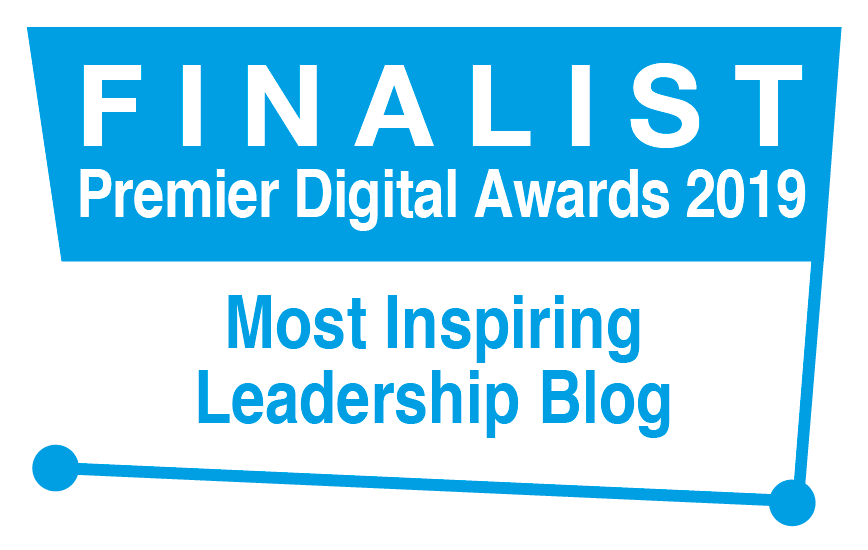|
People sometimes become stuck and struggle to find ways forward in their work and relationships because of how they perceive and respond to people and situations. I ran a workshop recently to help managers develop insights and skills in cognitive behavioural coaching (CBC). CBC is based on cognitive behavioural psychology. It is interested in how a person’s thinking influences his or her feelings and behaviour. It aims to improve a person’s effectiveness by reducing stress and opening fresh possibilities for the future.
Cognitive refers to mental processes: what we are thinking and what we believe. Behaviour refers to what we do: how we act in relationships and other situations. Coaching refers to helping a person enhance their life quality and effectiveness. CBC aims to help a person surface, examine and challenge limiting or self-defeating thoughts and beliefs. It is not just about positive thinking but more about reality-orientation. It focuses on what’s happening ‘here and now’ and on helping the person approach the future differently. A CB coach invites a person to talk about an issue, a challenge or something they are experiencing. Often, it is something that is causing the person frustration or stress. Sometimes, however, it could be simply that a person feels limited by a way of working or is struggling to find a way forward. In order for the person to be honest, the coach needs to demonstrate genuine interest and trustworthiness. The person needs to feel free to be open, without being judged, and to know the coach has the person’s best interests at heart. Listening and confidentiality are very important. If the person is feeling anxious, stressed or highly emotionally-charged, it’s unlikely that he or she will feel able to engage in a conversation about thinking patterns without calming down first. Creating the right cathartic space, perhaps over a coffee, can help the person relax and engage. A CB coach will allow a person to introduce an issue or situation he or she is dealing with and listen out for indicators of ‘cognitive distortions’, that is, ways in which the person is thinking about the issue or situation that are out of synch with reality or proving counterproductive. Common examples include polarising issues into extremes; over-generalising from specific experiences and ignoring all evidence to the contrary; predicting the future and excluding all alternative possibilities; assuming what other people are thinking or feeling; anticipating the worst possible outcomes. The coach will draw attention to these thinking patterns, invite the person to examine them, and offer supportive challenges that help the person think in new ways (e.g. ‘what assumptions are you making?’, ‘how far is what you’re thinking supported by the facts?’, ‘what are you not noticing?’). Finally, the coach will help the person plan a way forward to deal with the issue or situation differently. This could involve e.g. conversation, vividly imagining new scenarios or role playing to practise and reinforce new ways of thinking and behaving.
82 Comments
Coaching is often characterised as two people sitting down together, engaged in conversation, with one person helping the other to think things through. I ran a short workshop today that introduced insights and practises from Gestalt psychology and coaching characterised by a more experimental, experiential approach. Gestalt is a field of psychology that focuses on awareness in the here and now. Insight can emerge through pausing for a moment to notice what we are thinking, feeling or experiencing in our bodies. Gestalt views thoughts, feelings and somatic experience as interconnected.
We reflect this analogical experience in our language. For example, I may feel tightness in my throat when I approach a situation where I struggle to have a ‘voice’. I feel ‘gutted’ (accompanied by a stomach ache) or find this situation a ‘pain in the neck’ (accompanied by tension in my neck). Our minds filter our thoughts and feelings, partly to enable us to focus (rather than being aware of everything going on within and around us, all at the same time, which would be overwhelming) and partly if those thoughts and feelings are unacceptable to ourselves or others, or cause discomfort. What we experience in our bodies is unfiltered by the mind. Sometimes, what we experience in our bodies is analogous to what we are experiencing psychologically. Paying attention to what we are experiencing physically can raise unacknowledged or suppressed beliefs or issues into awareness. In Gestalt coaching, the coach may help the client explore issues or experiences by physical experimentation. This typically means doing something, rather than simply talking about it. As with all experimentation, there is an element of let’s try this and see what happens. Examples: *Rather than telling me what you want to achieve, show me what you want to achieve by acting out what it would look and feel like if you were successful. *Rather than explaining to me what you would you like to say to a person, say it to me directly as if I were that person, or enact a conversation playing both parts. *Rather than tell me what obstacles you anticipate facing, create physical obstacles in the room that represent the obstacles, then experiment with tackling or moving them. *Rather than describe the relationships between stakeholders, try using figures or objects to represent the people and experiment with placing yourself within the system too. *Rather than outlining your key priorities as a list, draw them in proportion size-wise and try changing their relative sizes to see what new insights emerge. The coach’s role is to help the client design a suitable experiment, stay attentive and observe what happens for the client in the here and now as they do it. Some coaches feed back their observations to the client, some encourage the client to reflect on their own observations. When a client acts out a posture or scenario, the coach may mirror the client’s posture or movement, inviting the client to notice what he or she sees and feels when the coach does it. Finally, the coach helps the client make sense of any insights that emerge and how to apply them to the client’s context. I took part in an ‘immunity to change’ coaching psychology workshop this week. Based on work by Kegan and others, we looked at how and why personal and organisational change can be so difficult to achieve and sustain. The notion of immunity is taken from the physiological system where the immune system serves to protect and preserve. The psychological parallel could be regarded as an anxiety management system, designed to protect us from feelings of insecurity and threat.
The psychological immune system provides relief from anxiety. It enables us to function in the world, to maintain a degree of psychological health. The problem is that we can become locked in defended patterns of belief and behaviour, often out of conscious awareness, that prevent us facing fresh challenges and growing in resilience by surfacing, confronting and working through our deepest fears. It’s as if we become subject to our beliefs and assumptions, rather than choosing them. In the workshop, we worked through a 4-step process known as creating an X-ray or immunity map. Draw 4 columns on a sheet of paper. In the first column, write down the ‘one big thing’ about yourself that, if you could change and achieve it, would make a significant positive difference in your life and work. You may want to take feedback from others too. For example, what do key colleagues believe would make the biggest positive difference to your performance at work? In the second column, write down what you do (or, conversely, don’t do) that works against you fulfilling that goal. In other words, how do you actually behave in practice that’s different to the ‘one big thing’ that you want to characterise your behaviour in the future? Try to be very specific. ‘I do X’ or ‘I avoid doing Y’ rather than describing feelings or states of mind. You may want to ask others for feedback too on what they observe you doing or not doing, e.g. in the workplace. In the third column, start first by vividly imagining yourself behaving in real situations in the opposite way to how you described yourself behaving in the second column. Try focusing on those behaviours and situations that could feel most scary, threatening or dangerous. Allow yourself to really feel the feelings, to feel the deep discomfort, anxiety or pain that such behaviours and situations evoke for you. You may find this best to do with a coach who can provide appropriate support. In the fourth column, reflect and write down the core beliefs and deep assumptions you are carrying that lead to the feelings you are experiencing. These are often assumptions drawn from childhood experiences, e.g. ‘I must do everything perfectly if I am to be loved and accepted by others.’ Such assumptions are often unspoken, subconscious beliefs that guide our thinking, feeling and behaviour. Again, it can be useful to work with a coach to help you tease out such beliefs. This 4-step process is designed to surface underlying beliefs and assumptions that have such a powerful influence that they hold our current behaviours in place. They are the subconscious anchors that can hold us back from changing. By surfacing and ‘objectifying’ our beliefs, we have opportunity to weigh them up, examine and challenge their validity. How true are they? What evidence supports them? How well do they serve us? What alternatives could be more realistic and releasing? We closed this activity by setting up four chairs in the room, each representing one stage of the process. The person acting as ‘client’ would sit in one seat at a time while the coach coached them through that stage of the process. On completing one stage, the client would move to the next seat. We also experimented with physicality too, inviting the client to act out their goal at the first stage and their feelings at the third stage. The impact was dynamic, vivid and visual. According to the theory underpinning this approach, change efforts fail if they address profound issues at a surface, technical or behavioural level without attending to underlying psychological dynamics too. Deeply held beliefs and assumptions act like an elastic band, pulling the person back to where they started once the pressure to change is released. If the person or group is enabled to explore their personal and wider cultural beliefs, genuine transformation becomes possible. It was a humbling and inspiring encounter. On my way home on the train this evening, a young stranger, Abigail, sat next to me. As the journey progressed, she shared something of her work with young people. Abigail is a street dance and ballet tutor who runs a street level outreach charity as a social work venture to help young people stay out of trouble and reach their potential.
I was immediately impressed by her passion, her deep desire to make a difference in people’s lives, people at risk of falling into personally and socially destructive patterns of behaviour. I was also impressed by her depth of insight and understanding, both of the young people she works with and of the psychological/social work and business principles that undergird her practice. I’m continually amazed by some of the people I have the privilege to meet. This person, Abigail, turned a routine journey home into an inspiring adventure as she sparked my imagination and challenged my risk of complacency by her own raw passion and determination. Do you find yourself yearning for fresh challenge and inspiration? Look out for this girl when you’re next on a train. ‘Could you be more direct?’ I took part in a 2-day workshop recently, a Gestalt approach to conflict, challenge and confrontation in groups. There were 12 in the group, mostly therapists of one kind or another, and we started by introducing ourselves in 2s. ‘This is my life’ in 5 minutes. Next, after each had spoken, we commented on what we had noticed. ‘We’re the same in that…’ and ‘We’re different in that…’ It drew our attention to what we notice in first encounters and how we tend to deal with sameness and difference in groups.
There’s something about sameness that can provide a sense of comfort, of security, of being part of something bigger than ourselves. When we feel insecure, we may seek out points of sameness in order to build rapport, establish connection and thereby reduce our anxiety. Safety in numbers. In this context, difference can feel distancing, even threatening. If we continue to focus on sameness, an awareness of group identity emerges, a feeling of belonging, a sense of differentiation between the ‘us’ and the ‘not us’. This is an important principle in group and inter-group dynamics. The inclusive dynamic that creates a sense of group within a group is the same dynamic that can exclude others. If we focus exclusively on sameness within our group and on difference between our own group and other perceived groups, we create boundaries between us. If difference emerges within our group, we may ignore or resist it because it doesn’t fit the group norm, the norm we have subscribed to in order to feel secure. This can lead to collusion and group think. A way to break through unhelpful group and inter-group barriers is to acknowledge what the group provides for us, its functional value at a social psychological level, and yet also to draw our attention to the differences between us within the group and the similarities between us (or at least some of us) and those (or at least some of those) in other groups. This has the effect of raising fresh awareness, reconfiguring group identities, enabling us to see different patterns of sameness and difference and thereby fresh possibilities. A later activity in this workshop was to practice immediacy. We split into two groups. One group sat in a circle in the middle of the room, the others around the outside observing those in the inside circle. The inside group was invited and encouraged to practise speaking very honestly, clearly and directly with one another. The conversation started.‘I would like to facilitate the group.’ ‘I’m happy for you to facilitate.’ ‘I feel anxious.’ ‘What do you feel anxious about?’ ‘I feel anxious in case those on the outside judge my performance.’ It continued. ‘If I lose interest, I will check out.’ ‘What will checking out look like, what will we see?’ ‘I will gaze out of the window’.‘What do you want us to do if we see you gazing out of the window?’ ‘Call it.’ ‘I don’t know what you are thinking or feeling and I want to know.’ ‘Why is that so important to you?’ ‘Because I don’t feel a connection with you, I feel distant from you.’ Our task was to focus on what was happening within and between us here and now and to articulate it openly and courageously, even if it risked evoking conflict. Asking, ‘What is happening here and now?’ is such a powerful question. It draws attention of a group away from a topic, issue or abstraction into the immediate moment. ‘I’m thinking…’, ‘I’m feeling…’. The impact in the workshop group felt both profound and electric. To ask, ‘What is going on for me now?’ is a great way of establishing contact with myself. To articulate what I am thinking and feeling in a group or to hear others do the same invites others to be open too and, thereby, builds the quality of relational contact within the group. This can prove tricky cross-culturally, especially where it could be considered inappropriate, disrespectful or even offensive to speak out in a group. In other situations, it may simply feel too risky to acknowledge openly what I’m thinking or feeling. The challenge in this workshop was to experiment with being more open, less constrained, than we would normally behave. ‘If I asked you on a scale of 10 how honest and up-front you are in groups, what would you say? What would really happen if you were to ratchet it up a notch?’ |
Nick WrightI'm a psychological coach, trainer and OD consultant. Curious to discover how can I help you? Get in touch! Like what you read? Simply enter your email address below to receive regular blog updates!
|



 RSS Feed
RSS Feed